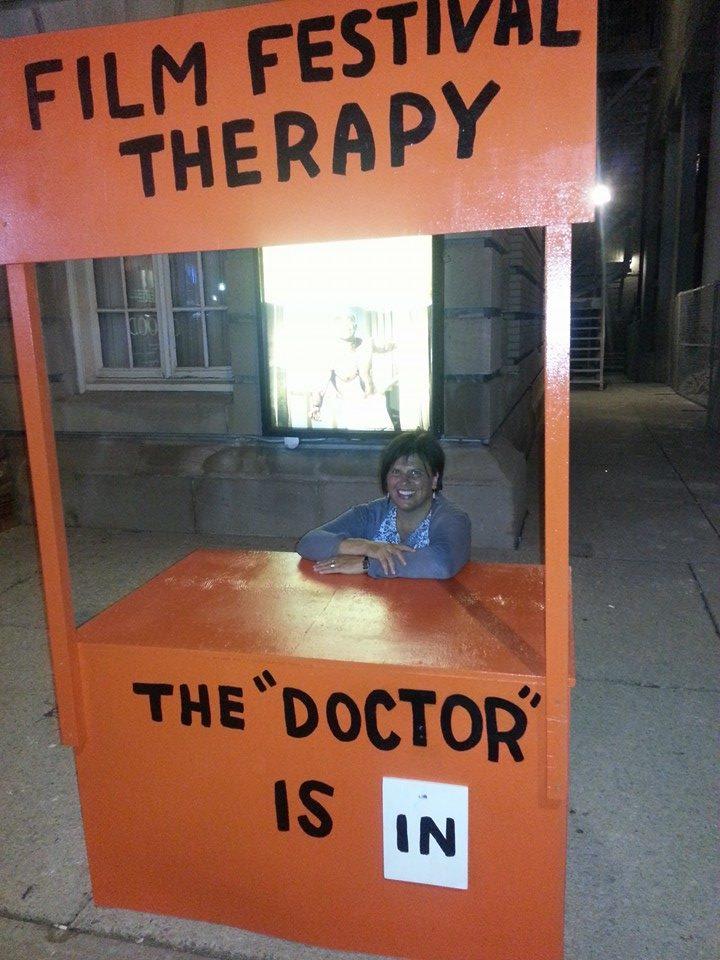Review of Clouds Sils Maria
by Gwen Shandroski M.Sc., S-LP© Expressive Arts Therapist, Clinical Member of OSP
So much about being a lesbian is about being a woman. Clouds of Sils Maria, one of the films that premiered opening night at the Toronto International Film Festival 2014 delved into the latter half of female development in an unusual way. Not through a plot focussed on the female lead in relationship as a mother, wife, sister or daughter. Not apologetically through goofy comedic story telling or self-deprecating humour about aging. Instead, the French director, Olivier Assayas, created a deep and complex female role. Piers Handling, Director and Chief Executive Officer of TIFF, described the film as “at once urgent and magisterial, delving into the female psyche through not just one but three women” in the Festival Programme Book (p.179). Piers’ summary of the plot is the actress, Juliette Binoche (Best Supporting Actress for her role in The English Patient) “plays Maria, a famous actor who rose to success with her role in an acclaimed lesbian play in which she played the younger part opposite a middle-aged lover. Now years later, she is approached to do the same play — this time in the role of the older woman.”
“At once urgent and magisterial, delving into the female psyche through not just one but three women”.
Returning home from this film, I was compelled in the early hours to write. I felt “expanded,” like I’d seen an amazing painting. The film addresses aging, through the juxtaposition of a young, hip actress making films à la The Matrix in superhero body suits with guns and space technology against an older actress rehearsing her lines as she traverses winding Swiss walking paths from a cottage in the Alps wearing everyday clothes, wrestling with the lines she has to say. Critiquing the way the lines were written and the stage direction, having to portray the older woman seducing the younger woman. How can she seem dignified and powerful and not weaker when playing this role as opposed to the role she played in her youth, the desired younger woman?
The brilliance of this film is Assayas’ ability to get us “at” this material. Every woman has felt or probably will feel compared, questioned, “looked at,” wondered about, when next to a younger woman. How do you not feel insecure — older, dated, slower, when next to a confident, tech savvy younger women dressed in a business suit? Two scenes in the film stand out. At the beginning, we see Maria’s photo shoot for Chanel, as an actress should be — glamorous, interesting to the camera vs. the second scene — Maria having to chase the car to get in as her preoccupied driver helps the younger woman flee paparazzi.
And here’s the rub, the scenes of Maria losing it and throwing the manuscript because she’s so frustrated with screwing up her lines or napping after a morning of rehearsing and hiking, are the ones I want to watch. They are the interesting portrayals of a woman struggling with herself, her limitations, others’ perceptions of her. The scenes where she is choosing a bracelet or gown for the Chanel photo shoot pale in comparison. The personal is political. What the audience usually gets about an actress is — shots from the red carpet, tabloid articles, YouTube videos and not the meatier stuff – a depiction of the actress involved in her art, actually acting. Art trumps consumerism.
Writers have finally started writing lesbians into their screenplays not for affirmative action reasons or to tantalize viewers but because a lesbian is a unique character. I was surprised by the number of actresses cast in lesbian roles at this year’s festival. Spoiler alert: Greta Gerwig and Jane Fonda are two of them. Somehow the leap has been made and no longer does a lesbian story have to show a male fantasy, or a coming out story, or make a political statement. This director used the lesbian story to speak about female development. I think writers are finally getting that creating a female character as a lesbian allows the writer to depict women in a very interesting way, void of the regular accoutrements.
Clouds of Sils Maria is not quick paced and may not have mass appeal in North America but it will hold the attention of viewers interested in psychological development. This is a new plot showing modern women’s work, in this case an actress refining the image of her soul on stage. Brava!
Gwen Shandroski has attends Toronto International Film Fesitval annually
